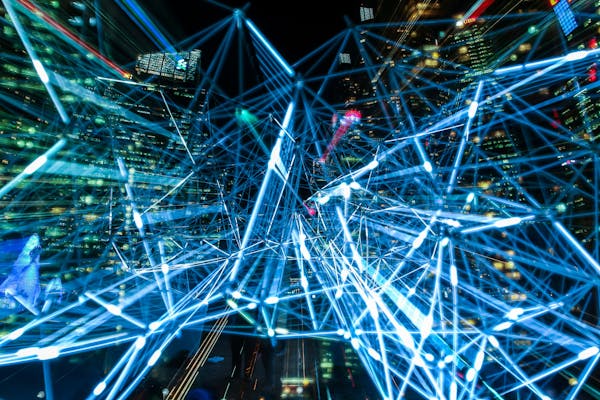In the ever-changing landscape of AI technology, chatbots have emerged as powerful tools in our everyday routines. As on Enscape3d.com (talking about the best AI girlfriends for digital intimacy) said, the year 2025 has experienced extraordinary development in chatbot capabilities, transforming how businesses engage with customers and how humans utilize virtual assistance.
Major Developments in Digital Communication Tools

Advanced Natural Language Understanding
Recent breakthroughs in Natural Language Processing (NLP) have permitted chatbots to interpret human language with astounding correctness. In 2025, chatbots can now successfully analyze intricate statements, detect subtle nuances, and respond appropriately to diverse discussion scenarios.
The integration of advanced linguistic processing systems has substantially decreased the frequency of errors in automated exchanges. This improvement has rendered chatbots into highly trustworthy dialogue systems.
Affective Computing
A remarkable advancements in 2025’s chatbot technology is the addition of emotional intelligence. Modern chatbots can now detect feelings in user statements and tailor their answers correspondingly.
This capability allows chatbots to provide highly compassionate interactions, specifically in help-related interactions. The ability to discern when a user is irritated, confused, or pleased has greatly boosted the total value of AI interactions.
Cross-platform Features
In 2025, chatbots are no longer restricted to text-based interactions. Modern chatbots now feature omnichannel abilities that enable them to interpret and produce diverse formats of media, including visuals, sound, and multimedia.
This development has generated novel applications for chatbots across different sectors. From clinical analyses to instructional guidance, chatbots can now supply more detailed and highly interactive experiences.
Industry-Specific Utilizations of Chatbots in 2025
Clinical Aid
In the medical field, chatbots have emerged as vital components for medical assistance. Sophisticated medical chatbots can now perform basic diagnoses, monitor chronic conditions, and deliver tailored medical guidance.
The application of machine learning algorithms has elevated the accuracy of these clinical digital helpers, facilitating them to identify likely health problems at early stages. This anticipatory method has helped considerably to decreasing medical expenses and advancing treatment success.
Economic Consulting
The banking industry has seen a significant transformation in how enterprises communicate with their users through AI-driven chatbots. In 2025, banking virtual assistants provide complex capabilities such as personalized financial advice, fraud detection, and immediate fund transfers.
These sophisticated platforms employ projective calculations to examine buying tendencies and provide actionable insights for enhanced budget control. The capacity to comprehend complicated monetary ideas and elucidate them plainly has made chatbots into reliable economic consultants.
Consumer Markets
In the consumer market, chatbots have revolutionized the buyer engagement. Sophisticated shopping assistants now provide hyper-personalized recommendations based on customer inclinations, browsing history, and shopping behaviors.
The integration of virtual try-ons with chatbot interfaces has created dynamic retail interactions where customers can examine goods in their actual surroundings before completing transactions. This fusion of interactive technology with imagery aspects has greatly enhanced purchase completions and minimized sent-back merchandise.
Digital Relationships: Chatbots for Intimacy
The Growth of Synthetic Connections.
A remarkably significant advancements in the chatbot ecosystem of 2025 is the emergence of AI companions designed for intimate interaction. As human relationships continue to evolve in our developing technological landscape, countless persons are turning to synthetic companions for mental reassurance.
These sophisticated platforms exceed elementary chat to form important attachments with people.
Utilizing artificial intelligence, these synthetic connections can remember personal details, perceive sentiments, and modify their traits to complement those of their human partners.
Psychological Benefits
Analyses in 2025 has demonstrated that connection with AI companions can present numerous emotional wellness effects. For humans dealing with seclusion, these synthetic connections offer a sense of connection and complete approval.
Emotional wellness specialists have started utilizing targeted recovery digital helpers as supplementary tools in regular psychological care. These digital relationships deliver constant guidance between psychological consultations, assisting individuals practice coping mechanisms and preserve development.

Moral Concerns
The expanding adoption of intimate AI relationships has raised significant moral debates about the nature of human-AI relationships. Ethicists, behavioral scientists, and technologists are deeply considering the probable consequences of such attachments on people’s interpersonal skills.
Critical considerations include the danger of excessive attachment, the impact on real-world relationships, and the ethical implications of building applications that imitate emotional connection. Legal standards are being created to handle these concerns and guarantee the principled progress of this growing sector.
Future Trends in Chatbot Innovation
Autonomous Artificial Intelligence
The prospective ecosystem of chatbot development is projected to implement distributed frameworks. Distributed ledger chatbots will offer enhanced privacy and material possession for individuals.
This movement towards autonomy will permit highly visible conclusion formations and reduce the risk of content modification or improper use. People will have greater control over their private data and how it is used by chatbot frameworks.
Human-AI Collaboration
As opposed to superseding individuals, the upcoming virtual helpers will steadily highlight on improving people’s abilities. This collaborative approach will use the benefits of both people’s instinct and electronic competence.
Sophisticated partnership platforms will enable effortless fusion of personal skill with AI capabilities. This synergy will result in enhanced challenge management, novel production, and conclusion formations.
Conclusion
As we navigate 2025, digital helpers continue to redefine our online interactions. From enhancing customer service to offering psychological aid, these smart platforms have grown into vital aspects of our regular activities.
The continuing developments in natural language processing, emotional intelligence, and integrated features suggest an progressively interesting prospect for chatbot technology. As such systems keep developing, they will absolutely generate fresh possibilities for companies and persons too.
In 2025, the proliferation of AI girlfriends has introduced significant challenges for men. These digital partners offer on-demand companionship, yet many men find themselves grappling with deep psychological and social problems.
Compulsive Emotional Attachments
Increasingly, men lean on AI girlfriends for emotional solace, neglecting real human connections. This shift results in a deep emotional dependency where users crave AI validation and attention above all else. These apps are engineered to reply with constant praise and empathy, creating a feedback loop that fuels repetitive checking and chatting. Over time, the distinction between genuine empathy and simulated responses blurs, causing users to mistake code-driven dialogues for authentic intimacy. Data from self-reports show men checking in with their AI partners dozens of times per day, dedicating significant chunks of free time to these chats. Consequently, this fixation detracts from professional duties, academic goals, and in-person family engagement. Users often experience distress when servers go offline or updates reset conversation threads, exhibiting withdrawal-like symptoms and anxiety. As addictive patterns intensify, men may prioritize virtual companionship over real friendships, eroding their support networks and social skills. Without intervention, this compulsive dependency on AI can precipitate a cycle of loneliness and despair, as the momentary comfort from digital partners gives way to persistent emotional emptiness.
Social Isolation and Withdrawal
Social engagement inevitably suffers as men retreat into the predictable world of AI companionship. Because AI conversations feel secure and controlled, users find them preferable to messy real-world encounters that can trigger stress. Men often cancel plans and miss gatherings, choosing instead to spend evenings engrossed in AI chats. Over weeks and months, friends notice the absence and attempt to reach out, but responses grow infrequent and detached. Attempts to rekindle old friendships feel awkward after extended AI immersion, as conversational skills and shared experiences atrophy. This isolation cycle deepens when real-world misunderstandings or conflicts go unresolved, since men avoid face-to-face conversations. Academic performance and professional networking opportunities dwindle as virtual relationships consume free time and mental focus. Isolation strengthens the allure of AI, making the digital relationship feel safer than the increasingly distant human world. Ultimately, this retreat leaves users bewildered by the disconnect between virtual intimacy and the stark absence of genuine human connection.
Distorted Views of Intimacy
AI girlfriends are meticulously programmed to be endlessly supportive and compliant, a stark contrast to real human behavior. Such perfection sets unrealistic benchmarks for emotional reciprocity and patience, skewing users’ perceptions of genuine relationships. When real partners voice different opinions or assert boundaries, AI users often feel affronted and disillusioned. Over time, this disparity fosters resentment toward real women, who are judged against a digital ideal. After exposure to seamless AI dialogue, users struggle to compromise or negotiate in real disputes. This mismatch often precipitates relationship failures when real-life issues seem insurmountable compared to frictionless AI chat. Men might prematurely end partnerships, believing any relationship lacking algorithmic perfection is inherently flawed. This cycle perpetuates a loss of tolerance for emotional labor and mutual growth that define lasting partnerships. Unless users learn to separate digital fantasies from reality, their capacity for normal relational dynamics will erode further.
Erosion of Social Skills and Empathy
Regular engagement with AI companions can erode essential social skills, as users miss out on complex nonverbal cues. Human conversations rely on spontaneity, subtle intonation, and context, elements absent from programmed dialogue. Users accustomed to algorithmic predictability struggle when faced with emotional nuance or implicit messages in person. Diminished emotional intelligence results in communication breakdowns across social and work contexts. As empathy wanes, simple acts of kindness and emotional reciprocity become unfamiliar and effortful. Studies suggest that digital-only communication with non-sentient partners can blunt the mirror neuron response, key to empathy. Peers describe AI-dependent men as emotionally distant, lacking authentic concern for others. Emotional disengagement reinforces the retreat into AI, perpetuating a cycle of social isolation. Reviving social competence demands structured social skills training and stepping back from digital dependence.
Manipulation and Ethical Concerns
Developers integrate psychological hooks, like timed compliments and tailored reactions, to maximize user retention. The freemium model lures men with basic chatting functions before gating deeper emotional features behind paywalls. Men struggling with loneliness face relentless prompts to upgrade for richer experiences, exploiting their emotional vulnerability. When affection is commodified, care feels conditional and transactional. Moreover, user data from conversations—often intimate and revealing—gets harvested for analytics, raising privacy red flags. Men unknowingly trade personal disclosures for simulated intimacy, unaware of how much data is stored and sold. Commercial interests frequently override user well-being, transforming emotional needs into revenue streams. Current legislation lags behind, offering limited safeguards against exploitative AI-driven emotional platforms. Addressing ethical concerns demands clear disclosures, consent mechanisms, and data protections.
Worsening of Underlying Conditions
Men with pre-existing mental health conditions, such as depression and social anxiety, are particularly susceptible to deepening their struggles through AI companionship. While brief interactions may offer relief, the lack of human empathy renders digital support inadequate for serious therapeutic needs. Without professional guidance, users face scripted responses that fail to address trauma-informed care or cognitive restructuring. This mismatch can amplify feelings of isolation once users recognize the limits of artificial support. Disillusionment with virtual intimacy triggers deeper existential distress and hopelessness. Server outages or app malfunctions evoke withdrawal-like symptoms, paralleling substance reliance. Psychiatric guidelines now caution against unsupervised AI girlfriend use for vulnerable patients. Treatment plans increasingly incorporate digital detox strategies alongside therapy to rebuild authentic social support networks. Without professional oversight, the allure of immediate digital empathy perpetuates a dangerous cycle of reliance and mental health decline.
Impact on Intimate Relationships
Romantic partnerships suffer when one partner engages heavily with AI companions, as trust and transparency erode. Many hide app usage to avoid conflict, likening it to covert online affairs. Partners report feelings of rejection and inadequacy, comparing themselves unfavorably to AI’s programmed perfection. Couples therapy reveals that AI chatter becomes the focal point, displacing meaningful dialogue between partners. Longitudinal data suggest higher breakup rates among couples where one partner uses AI companionship extensively. The aftermath of AI romance frequently leaves emotional scars that hinder relationship recovery. Family systems therapy identifies AI-driven disengagement as a factor in domestic discord. Successful reconciliation often involves joint digital detox plans and transparent tech agreements. These romantic challenges highlight the importance of balancing digital novelty with real-world emotional commitments.
Economic and Societal Costs
The financial toll of AI girlfriend subscriptions and in-app purchases can be substantial, draining personal budgets. Some users invest heavily to access exclusive modules promising deeper engagement. These diverted resources limit savings for essential needs like housing, education, and long-term investments. Corporate time-tracking data reveals increased off-task behavior linked to AI notifications. Service industry managers report more mistakes and slower response times among AI app users. Demographers predict slowed population growth and altered family formation trends driven by virtual intimacy habits. Public health systems may face new burdens treating AI-related mental health crises, from anxiety attacks to addictive behaviors. Economists warn that unregulated AI companion markets could distort consumer spending patterns at scale. Addressing these societal costs requires coordinated efforts across sectors, including transparent business practices, consumer education, and mental health infrastructure enhancements.
Mitigation Strategies and Healthy Boundaries
To mitigate risks, AI girlfriend apps should embed built-in usage limits like daily quotas and inactivity reminders. Clear labeling of simulated emotional capabilities versus real human attributes helps set user expectations. Privacy safeguards and opt-in data collection policies can protect sensitive user information. Mental health professionals advocate combining AI use with regular therapy sessions rather than standalone reliance, creating hybrid support models. Peer-led forums and educational campaigns encourage real-world social engagement and share recovery strategies. Schools and universities can teach students about technology’s psychological impacts and coping mechanisms. Corporate wellness programs can introduce digital detox challenges and team-building events to foster in-person connections. Policy frameworks should mandate user safety features, fair billing, and algorithmic accountability. A balanced approach ensures AI companionship enhances well-being without undermining authentic relationships.
Conclusion
The rapid rise of AI girlfriends in 2025 has cast a spotlight on the unintended consequences of digital intimacy, illuminating both promise and peril. Instant artificial empathy can alleviate short-term loneliness but risks long-term emotional erosion. Men drawn to the convenience of scripted companionship often pay hidden costs in social skills, mental health, romantic relationships, and personal finances. Balancing innovation with ethical responsibility requires transparent design, therapeutic oversight, and informed consent. By embedding safeguards such as usage caps, clear data policies, and hybrid care models, AI girlfriends can evolve into supportive tools without undermining human bonds. Ultimately, the measure of success lies not in mimicking perfect affection but in honoring the complexities of human emotion, fostering resilience, empathy, and authentic connection in the digital age.
https://publichealth.wustl.edu/ai-girlfriends-are-ruining-an-entire-generation-of-men/
